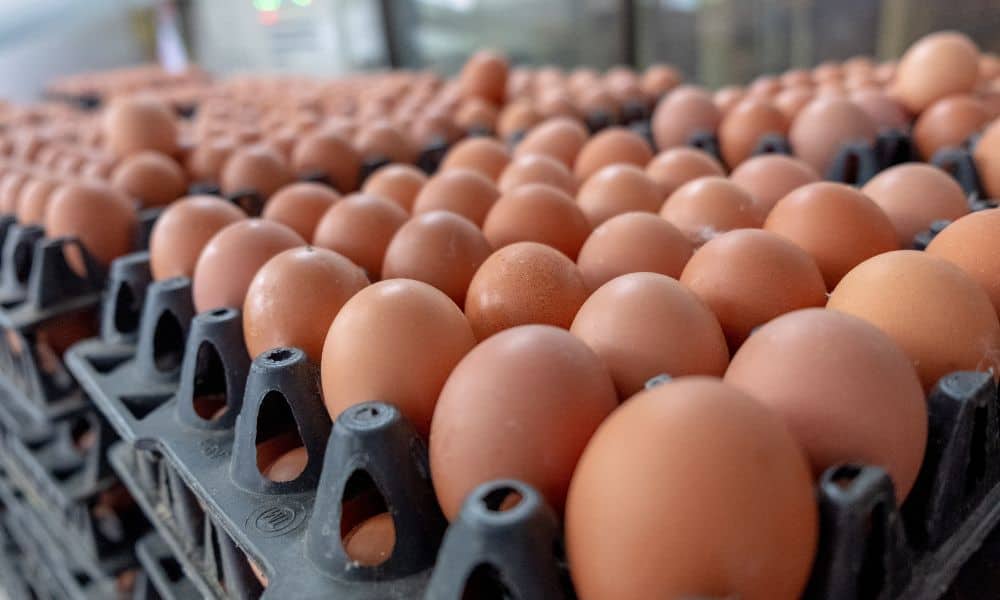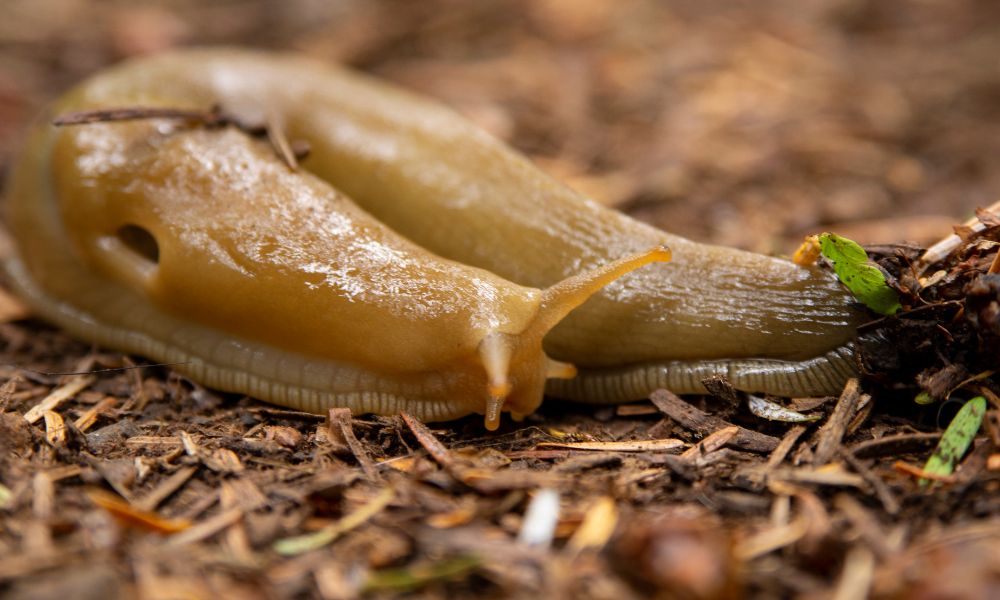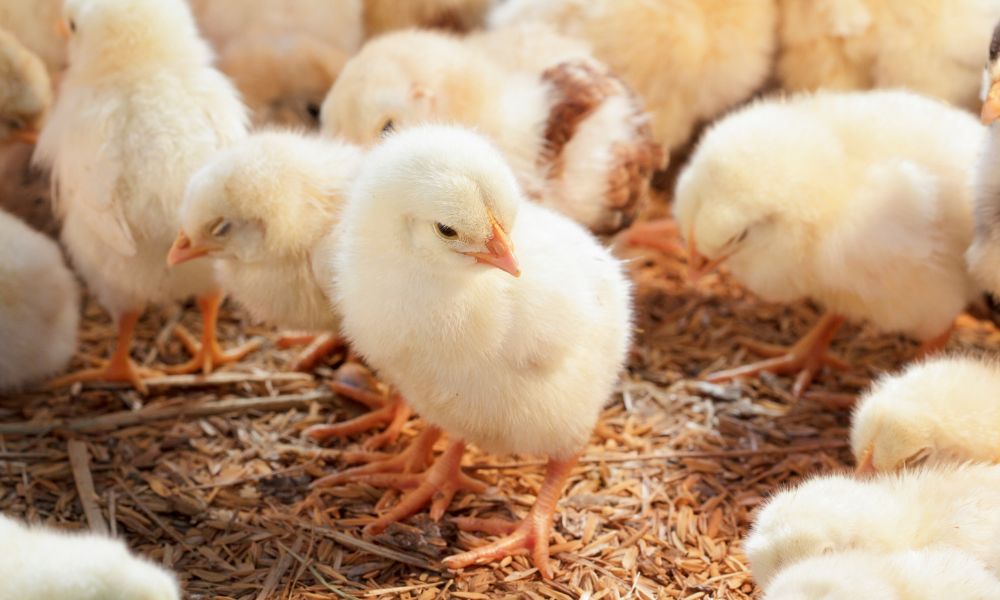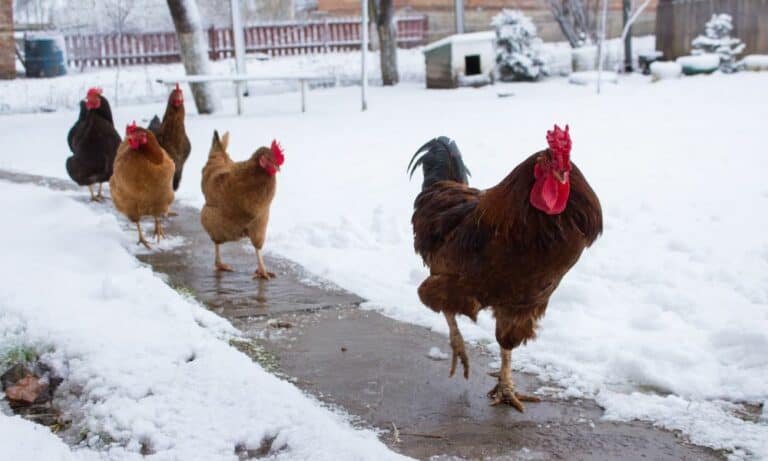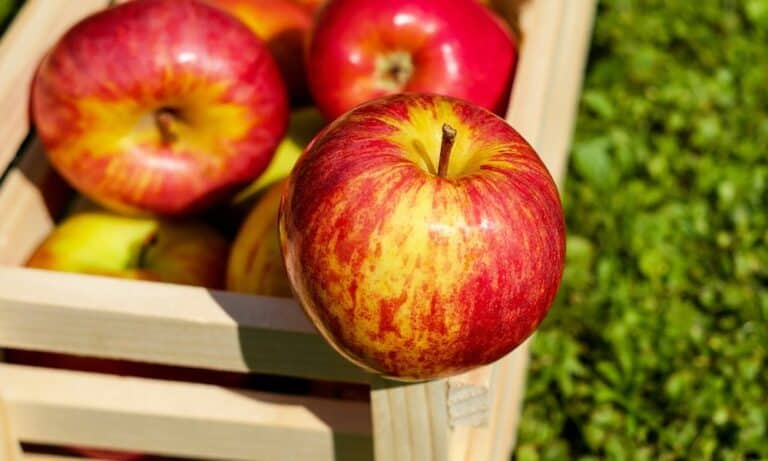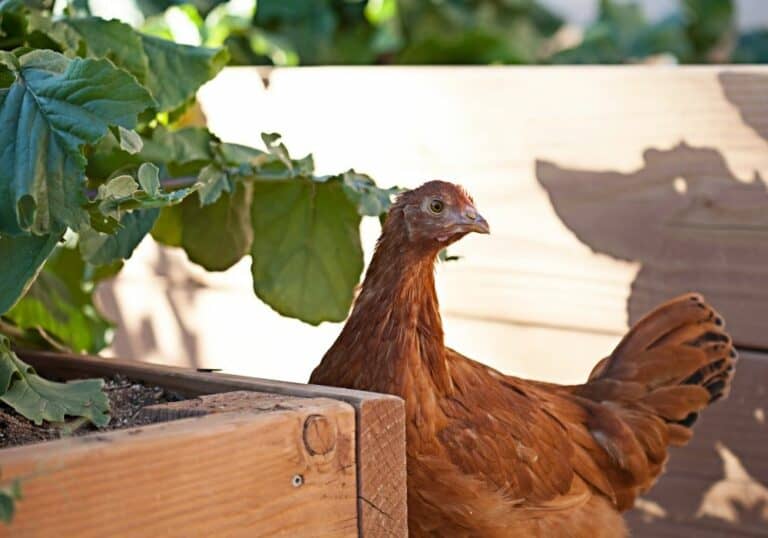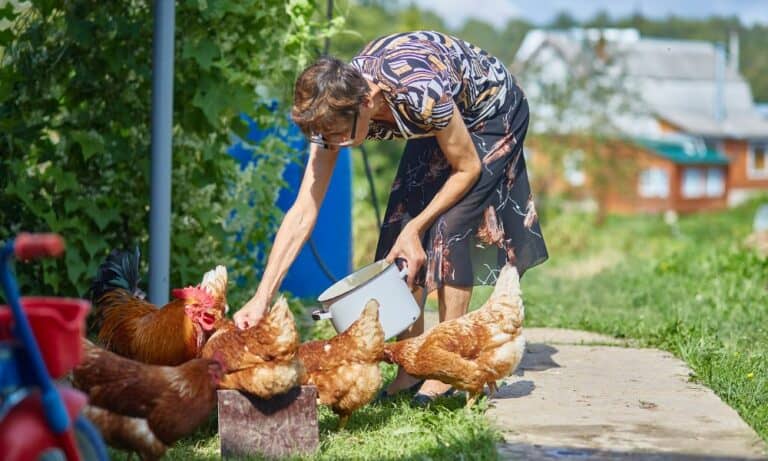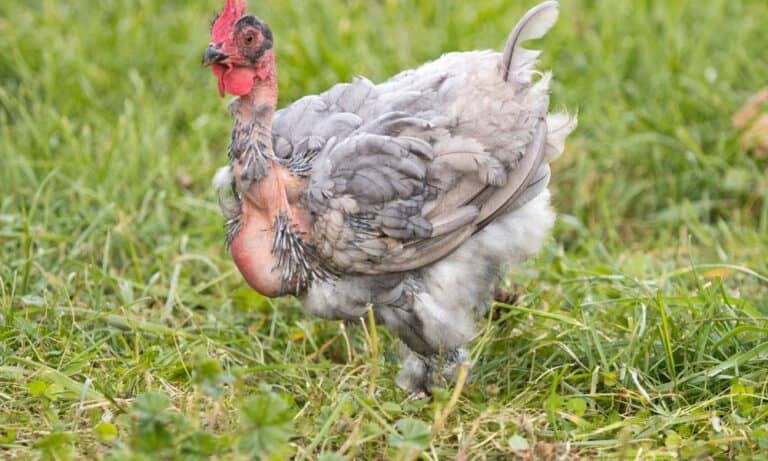People keep chickens for various reasons. Some want a pet they can cuddle and play with. Others want a few eggs for breakfast every day. And others run industrial operations where they sell meat and eggs on a massive scale. But do roosters lay eggs? No, only hens do that. And they don’t necessarily need a rooster’s help to do it. Let’s take a closer look at all this.
Where Do Eggs Come From?
Sexual reproduction happens in two ways. Some animals lay eggs that hatch and grow into adults while others produce live young without eggshells. But even in the latter case, parents had eggs inside their bodies that were fertilized and developed internally before joining this outside world. And following this principle, it’s generally assumed that females produce eggs.
They might lay the eggs and hatch them or they might grow the eggs inside their uterus and expel the fully-formed offspring. But there’s a difference between sex and gender. Sex refers to reproductive organs at birth while gender is driven by social conditioning. 21st Century humans recognize multiple genders including male, female, transgender, and non-binary.
And in the animal world, things can be equally complex. Some creatures can change their sex based on weather patterns and necessity. Turtle eggs that hatch under 82°F (28°C) turn out male. But if their hatching temperature is above 88°F (31°C), the baby turtle will be female. As for clown fish, if the female fish dies, a male fish can change its sex and start laying eggs.
Mating Behaviour in Other Egg Layers (#TriggerWarning)
Banana slugs have both male and female reproductive parts. Their penis is sometimes twice as long as their entire body, and when banana slugs mate, their foreplay can take two hours or more. They perform mutual penetration that sometimes ends in apophallation. This is when they … chew the penis off to gain extra energy for egg production. It won’t grow back.
But since the female slug’s vagina still works, it can mate as a female in the future. Lots of other creatures e.g. earthworms have both male and female organs. They can reproduce even when they don’t have a partner. Babies that are made this way are almost always male though, so most hermaphrodite creatures will mate and mutually fertilize each other to make females.
As for seahorses, the males and females dance together every day. But when they want to start a family, they do a gorgeous mating ritual that lasts up to 8 hours before the female lays eggs and implants them in the male. He has a special pouch for the eggs where he fertilizes, hatches, and raises his offspring for two to four weeks. Then his birthing contractions begin.
He expels 1,000 to 2,000 miniature seahorses called fry that have to fend for themselves. They become independent as soon as they’re born, but only five of the fry survive for every 1,000. Back to birds. In several species, females lay eggs, but males take shifts to hatch and look after the babies. They include starlings, pigeons, cranes, woodpeckers, and kingfishers.
Chickens, Roosters, Cockerels, Hens, and Pullets
In chickens, it’s always the female that lays eggs, and their sex remains constant. But while the word chicken can refer to both male and female birds, other terms are used to narrow this categorization. A young female chicken is called a pullet. Once she reaches reproductive age and starts laying, she’s a hen. But a female chicken with XXY chromosomes is a pollard.
A young male chicken is called a cockerel. Once he’s old enough to make babies, he’s called a cock or a rooster. And if he’s neutered or castrated, he’s called a capon. His comb and wattles won’t grow as big as fertile roosters. When you keep chicken industrially, egg producers are called layers. Meat chickens – both male and female – are broilers (3 lbs) or roasters (5 lbs).
On average, hens start laying eggs at about 20 weeks. Some breeds mature much faster, like the Egyptian Fayoumi which can start laying at 16 weeks. Others don’t start laying until 28 weeks after they hatch. But it’s always mature female chickens aka hens that produce eggs. Male chickens just don’t have the biology to pull it off. But … you might hear of rooster eggs!
What Exactly Are Rooster Eggs?
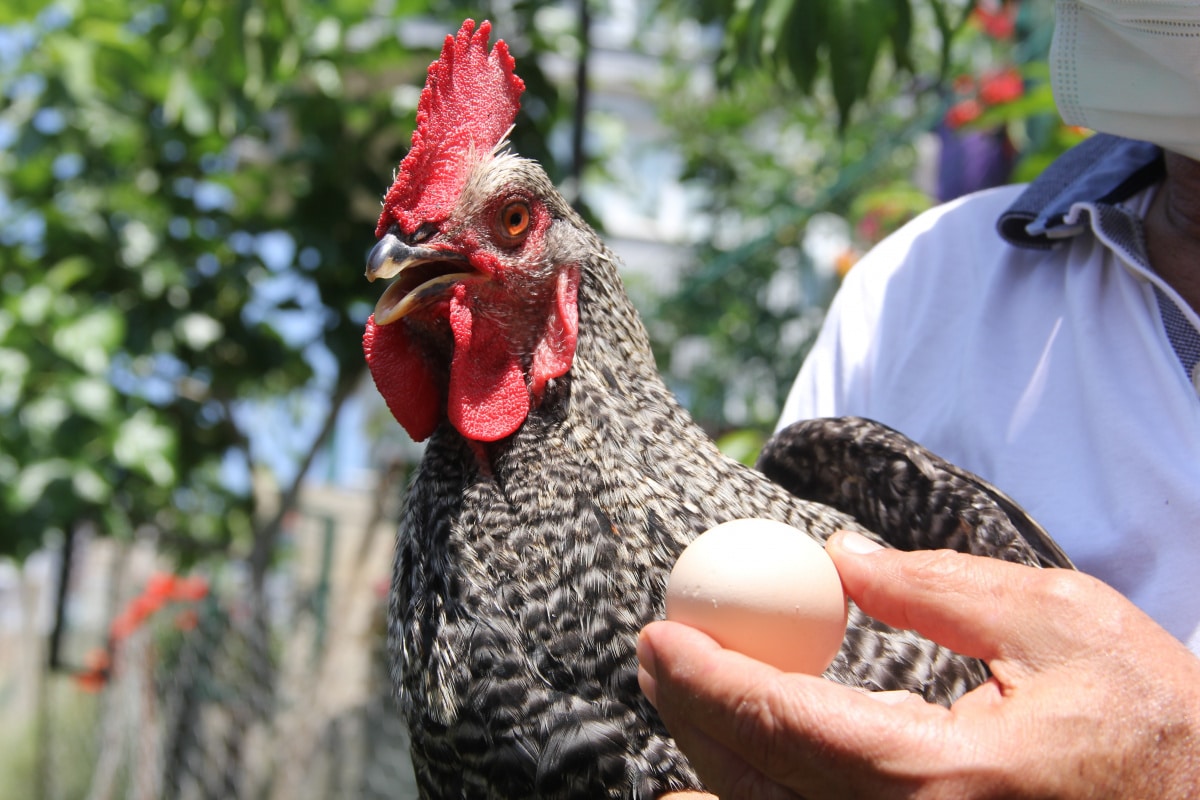
Rooster eggs are sometimes called Oops eggs or Fart eggs, and they are NOT laid by roosters. They’re actually premature hen eggs that were laid before they were fully formed. Typically, a hen takes 26 hours to make an egg inside her body. That’s why she lays every day. But some breeds take longer to fully form a single egg, so they only lay two or three eggs every week.
If an egg passes through the hen’s reproductive system too quickly, it may leave her body before it reaches full size. So it comes out with its shell intact, but it’s a ridiculously tiny egg. This micro-egg is nicknamed a rooster egg since no self-respecting hen would deliberately lay an egg that small. But factually, roosters don’t lay eggs because they don’t have ovaries.
For the record, a rooster doesn’t have a working penis either. They have a small penis-like bump inside their bodies, but it’s a vestigial organ that isn’t involved in reproduction. Both male and female hens have an opening called a cloaca. They use this for reproduction and it’s also where poop comes out. Pullets and roosters mate by rubbing their two cloacae together.
Chicken Eggs and Fertilisation
The sperm from the male goes into the female and fertilizes the eggs that are already forming inside her oviduct. The eggs that are fertilized can hatch into chicks within 21 days. But as we said at the beginning, a hen doesn’t need a rooster to make eggs. She can still lay daily. The difference is the eggs she lays without male involvement remain unfertilized and won’t hatch.
These are the eggs that we sell, cook, and eat because even if you keep them in the fridge or pantry for extended periods, they’ll never turn into chicks. That said, eat your eggs within 5 to 8 weeks of hatching or they’re likely to go bad and give you an upset tummy. So you now know that if you want eggs, you need hens. But if you want chicks, you need roosters as well.
Ideally, you should have a rooster for every ten hens. But if you have too many roosters in your flock, they’ll get aggressive and territorial, so you may need separate spaces if your flock is larger than 20. Especially if you’re rearing high-energy breeds. What about other birds? Ducks, swans, geese, ostriches, and emus have penises, which may explain their hot tempers!
Some of these penises can be as long as the bird’s body, particularly in ducks, geese, and swans. But they only get this long during mating season. The rest of the time, it retracts and shrinks into the body so it’s almost inside out. Then next mating season, it will regrow and extend to make more bird babies. Interestingly, these three birds often form lifelong couples.
The Art of Sexing Chicks
When chicks hatch for the first time, they look like adorably fuzzy balls of fluff. And it can be hard to tell which ones will grow up to give you eggs. In some chicken breeds, the male and female chicks have color differences that you can spot at a glance. They’re called auto-sexed chickens. But in most breeds, you have to squeeze the chicks to identify their sex aka sexing.
It doesn’t hurt the chicks, but it’s an intricate process that takes a lot of skill and practice. If you order a crate of chicks, you can ask for straight-run chicks, which means they have mixed sexes, both male and female. These are usually cheaper to buy. Or you can have them sexed in advance, so you’ll get all males or all females. Female chicks are the most expensive ones.
As we said, a layer or hen starts producing eggs at 18 to 22 weeks. In industrial settings, she stays productive for 2 to 3 years before she’s retired and used for meat. Her meat is usually tougher and is ideal for stewing since the prolonged simmer will soften the result. But a pet hen can live 8 to 12 years and may remain in your flock even after she stops laying regularly.
Molting in Chickens
About once a year, chickens will shed their feathers in the fall. This happens to both hens and roosters, and the feathers will eventually grow back. The process can take 8 to 16 weeks, and hens don’t lay eggs during this period. It can be frightening to watch your birds, but they’re not in pain. Keep them warm and provide a high-protein diet to help them fix their feathers.
Also, chickens typically don’t lay eggs during the winter, although some breeds will continue to lay eggs while it’s snowing. These include Andalusians and Spitzhaubens. Other breeds don’t hibernate, but they do conserve their energy and use it to keep their freshly molted bodies functioning during the extreme weather, so they have nothing left for egg production.
So, do roosters lay eggs? No. They’re males without ovaries and are incapable of laying eggs.

